What Kinds of Laser Eye Surgery Technologies are Used at London Vision Clinic?
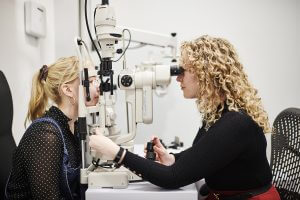
Given its name, the importance of technology in the field of Laser Eye Surgery should come as no surprise. Advancements in technology have not only improved the safety and efficacy of the procedure over the years, but they have also helped to make Laser Eye Surgery an option for more and more people. In fact, more people than ever before can now benefit from the treatment – with the right technology.
At London Vision Clinic, we are fortunate to have access to the best Laser Eye Surgery technology in the world. As Mr. Glenn Carp explains in the video below, we have a strong relationship with Carl Zeiss Meditec – a German company that consistently develops the most innovative Laser Eye Surgery equipment (sometimes with the help of our founder, Professor Dan Reinstein!). This enables us to have access to the most up-to-date technology, allowing us to offer the best possible outcomes to every one of our patients.
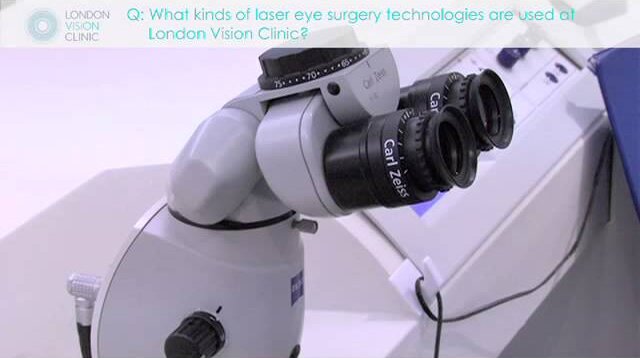
But ‘what kind of technologies does Laser Eye Surgery require?’, You might wonder. Let’s take a look.
Laser Eye Surgery Technology Explained…
Laser Eye Surgery requires a number of specialist devices which are used at every step of the process, including:
- Screening patients to see if surgery is appropriate (suitability)
- Making a pre-operative assessment
- Providing treatment
- Providing post-operative care
For the best outcomes, this typically involves five Laser Eye Surgery technologies:
- Topography
- Pachymetry
- Pupillometry
- Wavefront aberrometry
- Excimer lasers
So, let’s take a closer look at each of these technologies.
Topography
Topography is one of the most important safety factors in determining your suitability for Laser Eye Surgery. It is a state-of-the-art technology that allows us to measure the depth of the cornea and gives us a detailed map of the treatment area; this looks similar to a map of a mountain range with different elevations shown in contrasting colours. This is important when determining whether the corneas are too thin for Laser Eye Surgery.
There are different levels of topography in Laser Eye Surgery; the most basic kind of topography measures the shape of the surface at the front of your eye. The most detailed topography measures the shape of both the front and back surfaces of your cornea.
As Mr. Glenn Carp explains in the video below, topography also allows us to screen for certain conditions like keratoconus where there is some irregularity to the overall shape of the cornea.
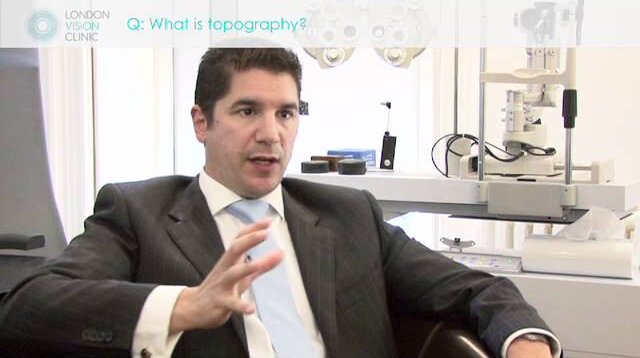
Common topography machines are the Orbscan™, the Pentacam™ and the Galilei™. At London Vision Clinic, we use Orbscan II to perform corneal topography. This is considered the ‘gold standard’ around the world due to the sheer number of points it is able to measure on the surface of the eye. We perform topography both before and after Laser Eye Surgery treatment.
Pachymetry
Pachymetry is another test used to measure corneal thickness. We use a handheld device – called a pachymeter – to measure the depth of the thinnest point of your cornea. This is performed alongside topography to ensure the highest safety standards when determining your suitability for Laser Eye Surgery.
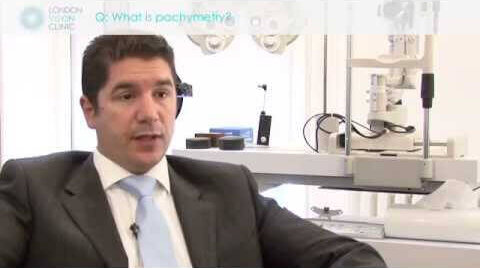
Using both pachymetry and topography, we are able to collect the most accurate data, ensuring that the thickness of the corneas is within acceptable safety limits for treatment. As Mr. Glenn Carp explains in the video above, at London Vision Clinic, we use the Artemis Insight 100 – a very high-frequency ultrasound-guided pachymetry device.
Pupillometry
As the name suggests, pupillometry measures the size of the pupils – the black windows that allow light into your eye. The size of the pupils varies depending on the light conditions so, to guarantee we accurately measure your pupil size, pupillometry takes place in a darkened room to ensure your pupils are open fully.
Mr. Glenn Carp explains more in the video below:
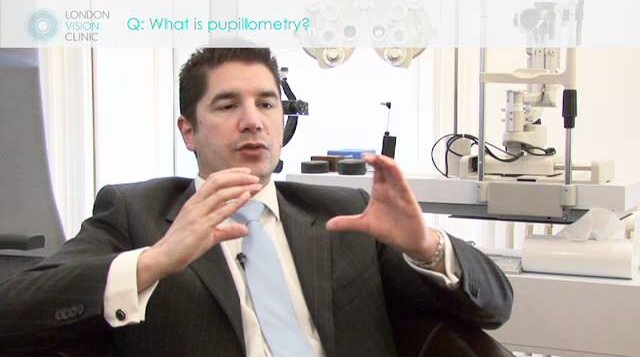
Accurate pupillometry is very important as we can only treat a defined area of the eye. Typically, this is a circular area with a diameter between 6mm and 8mm, depending on the laser used. If the pupil is larger than this treatment area, you would be left with an untreated ring at the edges of your vision. Essentially, this would be like looking through a clear patch in the middle of a smeared window.
The results of the pupillometry will help to determine the type of Laser Eye treatment required – or whether you are suitable for treatment at all. Some clinics, like London Vision Clinic, are able to treat larger pupils thanks to their access to specific lasers and programming.
Wavefront Aberrometry
Wavefront aberrometry allows us to identify imperfections of the eye that cannot be corrected with glasses alone. These optical imperfections are known as higher-order aberrations. They may affect your cornea and optical system and cause impairment to your vision in addition to your refractive error (i.e., myopia, hyperopia, presbyopia or astigmatism).
There are different standards of aberrometer, each of which records a different number of measurement points across the treatment area. The number of points typically varies from 60 to as high as 1200, with more points providing a more detailed picture of your optical system. The latest aberrometry device uses a different measurement system, producing images with a resolution of 40,000 points.
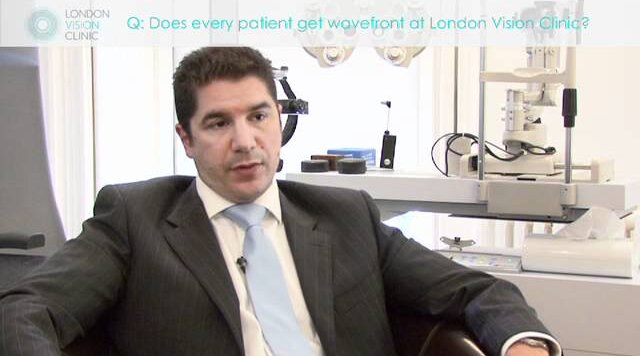
During your initial consultation, we will perform wavefront aberrometry while your pupils are both dilated or undilated. This allows us to gather accurate data regarding any higher-order aberrations in your eyes. As Mr. Glenn Carp explains in the video above, if we identify any higher-order aberrations, we will offer a wavefront-guided component in your personal treatment plan. This allows us to achieve the very best outcomes for your vision post-surgery.
Excimer Lasers
So far, we have focused on the technology we use before we even get to the treatment of your refractive error. But of course – you can’t perform Laser Eye Surgery without lasers. As we mentioned at the start of this article, we are honoured to work closely with Carl Zeiss Meditec, one of the world’s leading manufacturers of Excimer Lasers.
This working relationship allows us to offer our patients treatment with the most innovative excimer lasers, including the Carl Zeiss MEditect VisuMax Laser (the only femtosecond laser suitable for the “keyhole version of LASIK: ReLEx SMILE) and the Carl Zeiss MEL 90 Excimer Laser. Each of these devices features cutting-edge eye-tracking technology.
Learn more about our Laser Technology and the Artemis Insight 100 here.
If you have any further questions about Laser Eye Surgery at London Vision Clinic, get in touch with one of our friendly clinic coordinators. Alternatively, Book a Consultation today to start your journey to better vision.


